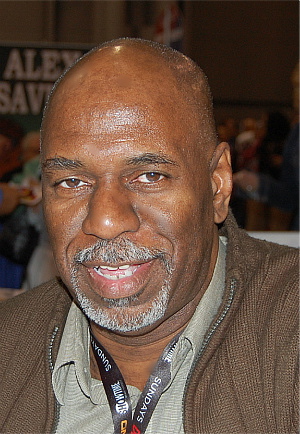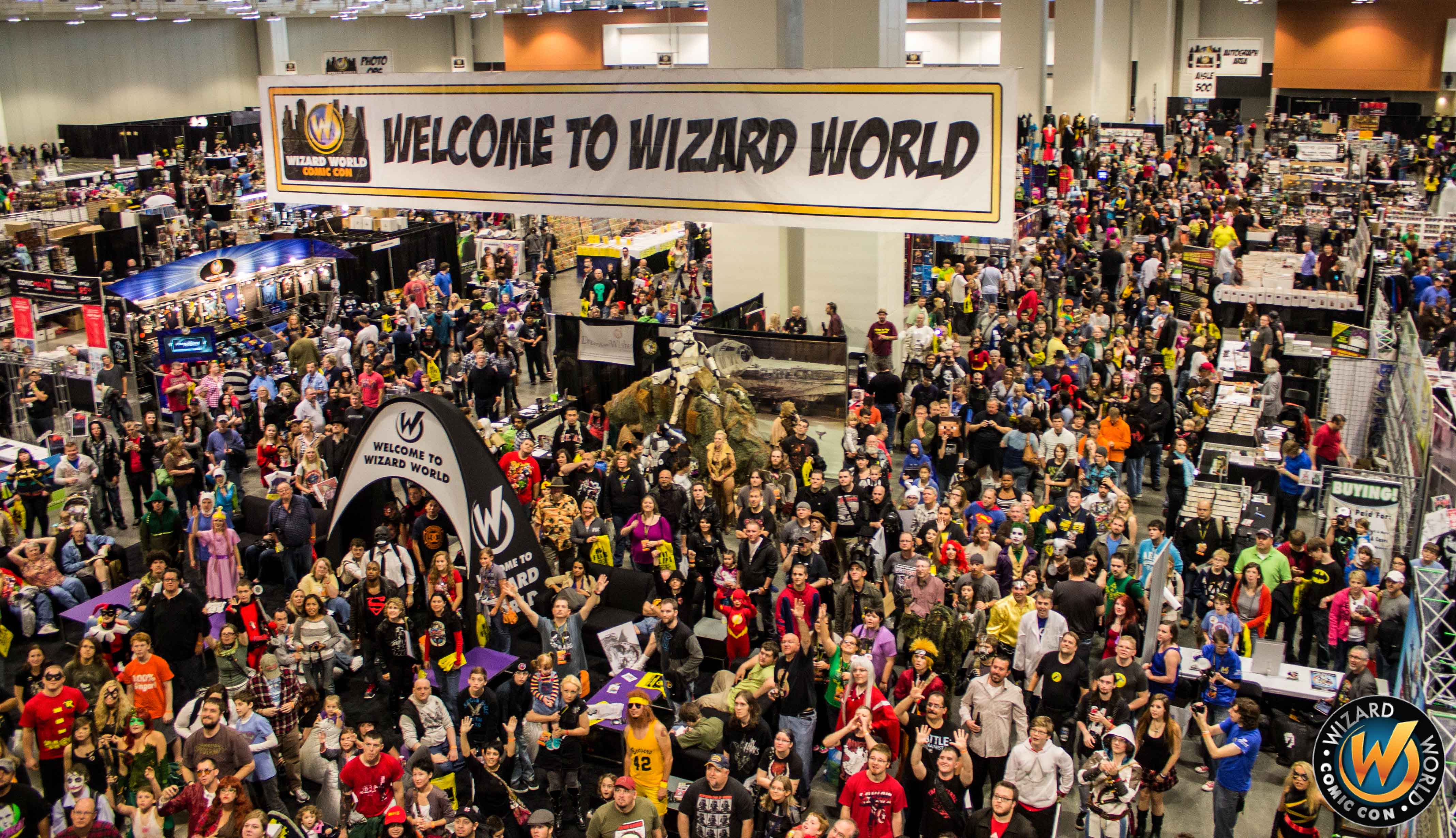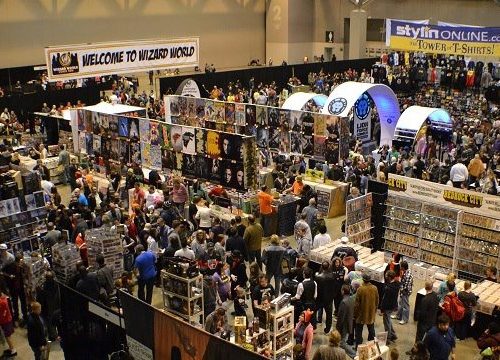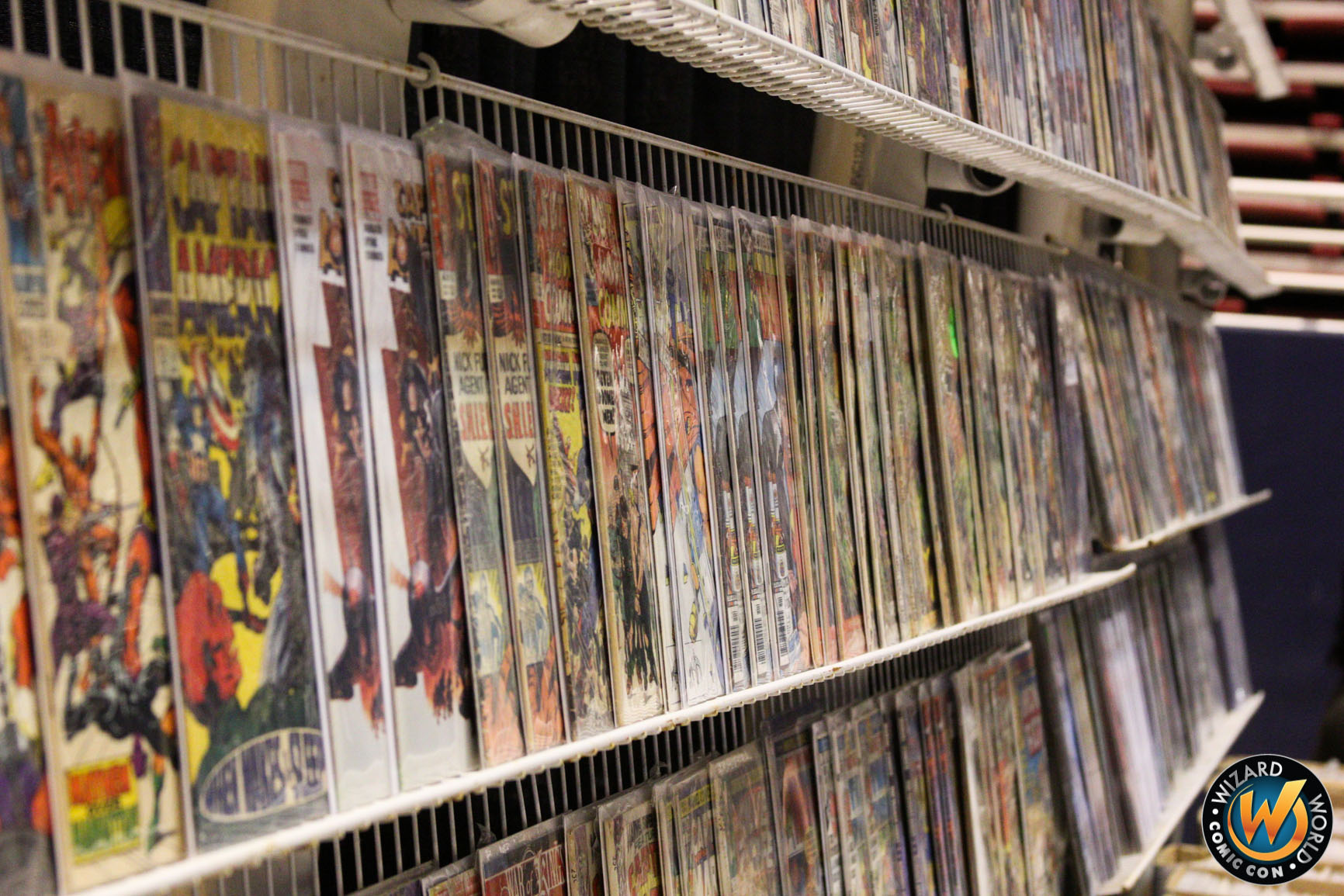This holiday season, Arvell Jones is thankful for a comic book character. First appearing in 1975, Misty Knight, the first major commercial African American female comic book superhero, which Jones co-created with Tony Isabella for Marvel, has made somewhat of a comeback over the past few years as a figure in the Netflix series “Luke Cage.” And the renaissance of fierce, afro-ed, bionic-armed Misty Knight has prompted fans to rediscover her creator, too.

Arvell Jones (Photo: Wizard World)
As a black kid growing up in Detroit in the fifties and sixties, Jones was put off by the lack of representation of people he knew in the media, especially the women in his life. Jones, who has always had a boundless imagination and love for comic books, created Misty out of the desire to see his mother, his high school girlfriend, his aunts, his female friends, and women who look like them represented with as much strength as he knew they had.
Though popular culture now includes a much wider range of experiences and identities than when he started out in the industry, Jones’ mission to create what he wanted to see in the world still rings true. Not only does he run a comic art workshop in Detroit with some industry friends, Jones still has some projects up his sleeve, which he can’t talk about just yet but everyone should keep an eye out for in 2019. Read on for an interview with the creator about becoming a professional comic book artist and writer, how television and movies are impacting the industry, and the possibilities still open for storytelling in the U.S. market. And make sure to say hello to Jones in person at Wizard World New Orleans, January 4-6 at the Morial Convention Center. (You can meet Simone Missick, who played Misty Knight in “Luke Cage,” there, too!)

Wizard World New Orleans 2018 (Photo: Wizard World)
Q: What was your inspiration for Misty Knight?
A: As a young black kid living in Detroit, I would turn on the television and I would only see “Amos and Andy” and Rochester [on “The Jack Benny Show”]. I think I had already created Misty; it just hadn’t been published at that point. She had a slightly different name and slightly different abilities, but I created her right out of high school. It was because I didn’t see anybody in the media reminding me of people I knew. I couldn’t relate to how these people acted. To be honest, as a black kid, I felt really embarrassed looking at the images that I saw. It just bothered me, as a kid. It felt a little demeaning.
I wanted to create a character that reminded me of my mother, my friends, my girlfriend that I had in high school, somebody really smart. The women’s movement hadn’t really taken off at that point, so the way comic characters were depicted—like Storm, who was a member of the Fantastic Four, later she became one of the most powerful members, but at the beginning, she could exert her powers for about a minute or so, but then she’d go, ‘Help me! I can’t do this anymore!’ Same thing with the character Marvel Girl—Jean Grey—who became the most powerful mutant in the universe, she’s a woman. But back then, she was like, ‘Oh, I’m trying to use my mental powers and I can’t! Help! Some man come and save me! I can get it started but that’s all I can do. I can just hold them off for a minute!’ I just had a problem with that. I created a ton of different characters, but this is the one that Marvel chose to actually publish, and that came out of my collaboration with Tony Isabella, who was looking for a sidekick for Iron Fist. In our conversations, Tony said he was tired of writing Iron Fist mainly having a conversation with himself in his head. He said, ‘I need someone for him to talk to!’ and I said, ‘I got just the character!’
Q: What a fantastic honor to the women in your life, to create a character that’s drawn from their strength.
A: Well, I guess it’s a tribute, but really, most of the women I met—my teachers, my Sunday school teacher—most of the women I met had good heads on their shoulders. They didn’t necessarily have to rely on a man to get things done. That’s what my mission was, to try and make them a little more relatable to not just me, but all the people that I knew. I had strong aunts, my mother, my girlfriend’s friends, some of my friends from high school, they were all busy people, they were not necessarily concerned with trying to find a man, but doing what they had to do.
Q: It’s interesting, thinking about representation and the tropes that are still there, just in different machinations, and how it’s important to break those down for kids who are maybe growing up and learning to read and they’re reading comics. To see people that they can compare to the women in their lives is really important.
A: I know how it affected me growing up. […] We’ve evolved since the sixties. I used to really look at media and it had an influence. Media does have an influence. I just had the opportunity to create a character that reached mass media, and I’m just excited and happy I had that privilege.
Q: How did you make comics into a career?
A: I think I was sort of on a mission. When I was maybe eleven years old, this mission started with watching television and not liking what it reflected within the African American community. Also just having an imagination, having a lot of stories in my head. My mother and my father encouraged me, they said, ‘Go ahead, don’t complain about it, do something about it.’ My father would take me when they were just starting to do comics conventions, I got to go to the New York Comic Con. He liked the creative aspect. The ideas I had in my head, he encouraged me to write them down. I was on the path to being a writer. They threw a bunch of comic books in front of me early on and said ‘Hey, read these and come up with your own ideas!’
I started writing and drawing at a very early age. Then, over time, I kept running into people who were doing the same sort of thing. I was in a community where if you walked down the street with a comic book you were likely to get beat up because you were the nerd, and it would get you bullied. But then I kept running into other people who liked the same things. My brother kind of encouraged me, my cousin at the beginning. Then I ran into people like Richard Buckler, Keith Pollard, Jim Starlin, Terry Austin, Al Migrom—they’re all from Detroit. We all kind of got in the industry at the same time. It was kind of like a pack—one of us’ll get in, we’d all get in. We kind of cut our teeth by working on everybody else’s stuff. Tom Orzechowski used to be our letterer. He became the letterer for X-Men and Spawn forever, and he created the Wolverine logo. We used to sit around in high school and work on each other’s work. We encouraged each other and kept each other busy. We created a community.
Being a creator is a solitary kind of life, living inside your head most of the time. Being able to get out and see what everybody else is doing is important. When I was a kid, it was very snobbish. You were kind of put down for even wanting to do comics. I really wanted to be a producer or a director, but comics was a good outlet for me. Everybody was telling me to get a “real job,” but I could sit down with a number two pencil and draw and write, maybe I had a typewriter at that time, maybe I didn’t—it didn’t stop my creativity, me being able to document what was in my head. Seeing other people do that and documenting those dreams and ideas is exciting.

Wizard World New Orleans 2018 (Photo: Wizard World)
Q: I’m interested in how of other genres of storytelling intersects with contemporary comics. Specifically I’m thinking about the Black Panther relaunch written by Ta-Nehisi Coates and the World of Wakanda series written by Roxane Gay.
A: I think it’s what you bring to the table. I’ve talked to a bunch of doctors, even a couple accountants, and they got some hair-raising stories in them! I’m saying ‘You should go ahead and write that up! Really, you’ve got some great ideas here!’ We’re writing about the human experience. I see that with the small press, they write about all kinds of things.
I had the opportunity to go on a cultural experience in Japan. It was myself, Sergio Aragonés, Jerry Robinson (who was the creator of The Joker), Steve Leialoha, and Trina Robbins. We all got a chance to go on this trip, they invited us, and we all asked, ‘Why are we here?!’ For a week, all we did was party, and we kept going, ‘they just brought us here to party?’ Then they put us in this smoke-filled room on the last day, and all these publishers came. We sat down, and they started talking to us in Japanese, but they were all yelling at us. Then the interpreter turned to us and said they wanted to know why we didn’t grow our market. In Japan, they write stories about everything. They write stories for old people, young brides, stories about mechanics. They write stories about everything, then the market decides what they want to see, not the businessmen. That’s the only way you’re really going to know—go ahead and give them a shot.
Their comics and manga is more diverse. […] I think that we’re kind of missing out on that. They do educational comics, they do all kinds of stuff. We’re sort of experimenting with that stuff over here, but we’re taking baby steps. Over there, there’s so many different levels of art and levels of story. They’re writing for toddlers, they’re writing for seniors, they’re writing for everybody in the middle. I guess we’re more money-oriented, and they’re just trying to express themselves. Why shouldn’t a doctor write about their experiences and their life? It could be turned into something digestible for a kid. What if that helps a kid decide they want to be a doctor? Major companies, they don’t want to take that chance. But there’s a lot of small presses filling in the gaps. I’m excited about seeing that work nowadays.
Q: I’m curious about your take on this whole cannon of movies and television—especially Netflix—that’s formed this whole other side of comics.
A: As a kid, when I was reading these comics and creating them too, I always saw them as a movie or a TV show. I always saw these people as real, to a degree, in my head. I always imagined what it would be like to look up in the sky and see somebody flying, or see someone moving something with their mind. I used to imagine that, in real terms, what that would look like. My drawings were representative of what one day could be or could somehow occur. So to me it was inevitable that we’d start to see something that would look like kinda like what we were thinking. It took a long time, of course. Technology had to catch up. But I figured once that happened, you know, we’re creating modern mythos. Stan Lee and Jack Kirby and all those early creators hit upon something—you know everybody wants to be more than they can be to a degree, or at least to see no limits to what can be. The funny thing is, that some of the things we thought about we watched scientists come by and actually invent. Even the idea of talking wirelessly on the phone—in the sixties, that was impossible! I ran into Neal Adams at a convention one day, and I hadn’t seen him in a long time. I said, ‘Hey man, how you doing?’ and he said, ‘I’m doing okay, we’re taking over the world!’ I said, ‘You know, I guess you’re right!’

(Photo: Wizard World)
Q: What part of conventions do you most look forward to?
A: I’m an old convention-goer since the sixties. I think I was at the first New York Comic Con. Detroit was one of the first places to have a comic convention, and that’s where I met a lot of these people that ended up being in the business. I met my buddy and partner at times, Keith Pollard. He was walking around with a portfolio on the convention floor one day, and I was walking around and at that time I was interested in talking to anybody who was doing what I was doing, so I pulled him aside and said, ‘Let me see what’s in your portfolio! Are you an artist?!’ and he looked at my work, and I said, ‘What do you think, maybe we should team up and work together?’ and he said, ‘You’re not good enough yet.’ But that was okay; we had a long, fun relationship, same with other people.
We were all trying to learn this business together; we would get together at these shows and share information. I would say to anybody that’s interested in the field: we weren’t looking at each other as competition as much as we were looking at each other as a way to learn off of each other and share information with one another. I think that’s what I most enjoy about going to these conventions today, I love it when people come up and share their portfolios and talk to me about the projects they’re doing. I love seeing the projects that are coming out, not just from the majors, but what everybody’s doing.
Lately, the costumes at conventions I’m finding amazing. When I started, maybe somebody would come with a homemade helmet or a homemade Captain America shield, now everything is looking so real! And there’s a lot more women at the conventions now, and getting involved in general. I enjoy going to conventions and seeing that. Unfortunately I’m stuck behind a table most of the time, but when I can slip away and run around, I’ll do that.
See more of Arvell Jones’s work here.
 NOLAbeings
Multimedia artist Claire Bangser created NOLAbeings as a portrait-based story project that marries...
NOLAbeings
Multimedia artist Claire Bangser created NOLAbeings as a portrait-based story project that marries...
 Data corner: Adobe Suite (create a PDF, social media graphic, presentation, edit a photo and video
Data corner is where you go to work with analytics and top tech skills. It takes on everything from PERL and SQL to Canva and Sprout Social.
Data corner: Adobe Suite (create a PDF, social media graphic, presentation, edit a photo and video
Data corner is where you go to work with analytics and top tech skills. It takes on everything from PERL and SQL to Canva and Sprout Social.
